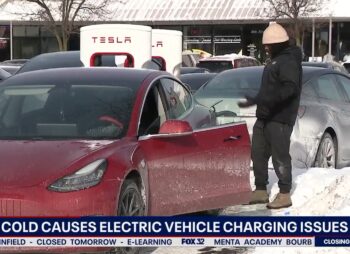
My Lords, the noble Lord, Lord Lea, referred to ships passing in the night, and rightly so on the economic front. I hope that I shall find myself on HMS “Lawson”, rather than HMS “Stern”. The same goes for ships passing in the night in science, which has now devolved largely into a shouting match between extreme alarmists and sceptics, with not nearly enough moderate dialogue between them. Perhaps I could help to gain a little perspective on this by referring to what my noble friend Lord Lawson referred to as the unsubstantiated assertions of the Government, to see where common sense stands on those. –Lord Rodney Leach, House of Lords, 13 May 2009
This summer and fall, the Atlantic Ocean might become a testing ground for competing scientific theories. After decades of warmth, there’s evidence that the ocean is cooling, a change that could mean fewer of the hurricanes that wreak havoc on coastal communities and their economies. The theory is that the Atlantic cools and warms every 25 to 40 years, changing the African monsoon and easterly jet stream, air pressure over the ocean and levels of wind shear, Bell said. All of these can add or detract from the lifespans of hurricanes, which can have consequences from Newfoundland to Nicaragua. The thing is, not everyone believes the AMO affects hurricanes that way. –Brian K Sullivan, Bloomberg, 7 June 2016
NOAA announced this weekend that there is a 75 percent chance a La Ni√±a will form in the equatorial Pacific Ocean by fall, a phenomenon that is the flip side of the now-deceased El Ni√±o. When the strong, naturally occurring El Ni√±o of 2015-2016 occurred, temperatures across the planet spiked higher than normal, caused widespread “nuisance flooding,” above-normal heat, and hottest-year-ever claims (under investigation by the House Science Committee). So if the 2015-2016 El Ni√±o was the powerful “king” behind our recent warm weather and so-called hottest-year-ever claims, La Ni√±a is the “queen” who plans to take back the throne. This flipping back and forth is part of the El Ni√±o-Southern Oscillation (ENSO) cycle, and it occurs every 5 to 7 years. –Thomas Richard, Environment Examiner, 13 June 2016
Thirty years ago, James Hansen made some spectacularly poor global warming predictions before Congress. Hansen predicted two degrees global warming by 2006. He was off by a factor of ten. Earth warmed about 0.2 degrees from June 1986 to June 2006. –Tony Heller, Real Science, 13 June 2016
















